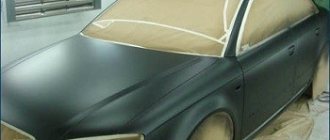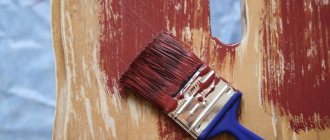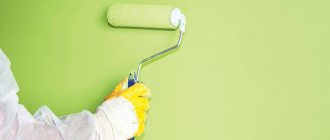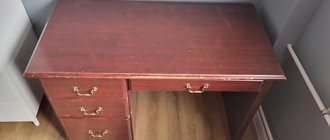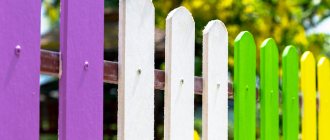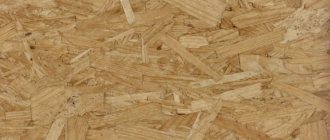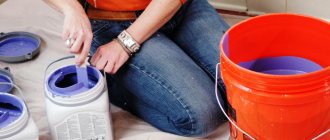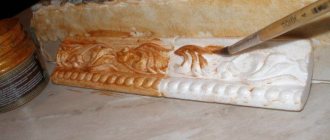Paint application area
This product can be used to paint products of various structures: fabric, PVC, metal, wood, coated with construction plaster mixtures. The scope of application of “industrial” and “home” samples varies. The first ones are used for:
- applying drawings to the surface of vehicles;
- creating visual compositions with a variety of colors on fences, fences, asphalt and tile surfaces in the city or in the country;
- images of temporary signal, sports, and road markings;
- forming marks and inscriptions on the floor of production premises and construction sites.
Nuances of dyeing technology
Buying paints and varnishes is not the key to successful repairs. Although working with velvet paints and varnishes is not much different from conventional painting, you need to take into account some features of the emulsion.
Preparatory stage
Before applying the paint layer, the walls are first tidied up. Remove cracked plaster and smooth out defects with putty. Framing decor and stucco molding are shielded with masking tape. Dyes are added to the jar with the emulsion, the composition is thoroughly mixed. Prepare the necessary tools: a spatula, a tray for the water-based mixture, brushes of different sizes, a roller for velor coatings (it should absorb the paint, then transfer it to the surface), and a trowel.
Step-by-step instructions for the painting process
Using relief rollers, they achieve unusual decoration and textured surfaces. Compositions with mother-of-pearl look especially impressive. They radically change the space and visually expand the walls.
Chalk paint for furniture
It has been known for many years and was previously used to paint walls and ceilings. Today, the popularity of such products has returned, however, their character and fate are completely different.
Nowadays, people increasingly want to buy chalk paints for furniture. They represent a new generation of products with a very wide range of applications. Most often they are used for furniture restoration, decorating fabrics and upholstery.
DIY chalk paint for furniture
Each of us knows the value of chalk paint. But you can do it yourself. How to make chalk paint for furniture? It is not difficult!
Composition of chalk paint for furniture:
- water;
- dental plaster;
- jar;
- a small diameter stirrer that will fit into the jar;
- any acrylic paint (not to be confused with acrylic emulsion);
- spoon.
Chalk Paint Recipe for Furniture
- Pour gypsum into a vessel of any container (you can take a liter jar) to 1/3 of the volume.
- Carefully add water, mixing thoroughly with a spoon so that there are no lumps. The mass should be thick, thicker than thick sour cream. You can also mix with a stirrer.
- Pour acrylic paint to the top. Mix again, collecting all traces of gypsum from the sides of the jar, stirring all the lumps. This time, the consistency should be like thick sour cream with 30% fat content.
Before use, it is worth conducting a test on a small, inconspicuous area of furniture.
Features of the material
Ready-made chalk paint can be bought at hardware stores, but it is much more convenient and profitable to prepare such a composition yourself.
Most often, the cans indicate that the surface does not need preparation, that is, there is no need to remove the old coating, putty or prime. But, as practice shows, the paint will not always stick and adhere well. Therefore, at least minimal preparation will have to be done.
The most important requirement for the surface to be painted: it must be cleaned of dirt and dust, and degreased. If we are talking about laminated furniture, then at a minimum you will have to wipe it with gasoline or a soap solution (possibly with dishwashing detergent). If a wooden base is to be painted, then you will also have to putty all the existing depressions and flaws.
Before you decide to remodel furniture using chalk paint, it is worth studying some of the features of its use:
The most popular use of chalk paint among designers is to give antique effects to furniture, doors and other interior elements. For complete coverage, paint is applied in at least two layers, or even three.
Applying chalk paint to a wooden surface
After the prepared surface has completely dried, apply paint. Apply the first layer with long strokes. The first layer should dry within an hour. The next layer can be applied with a brush or roller. It depends on your preference. Apply the third and subsequent layers if necessary. With complete drying between layers. Drying should be natural. There is no point in speeding it up by any means, such as a hairdryer. This can lead to paint delamination.
Varieties of CM
Chalk paint was first used in 1990 by a British designer. It went on sale under the Chalk Paint brand. The recipe remained secret. Therefore, specimens have been developed that contain different constituent elements. They are all water based and differ in additives. The name of chalk paint depends on them.
- Natural and synthetic resins are found in resin dyes.
- Silicates are mineral constituents.
- If casein is added, then it is milk paint.
- Flax oil is contained in the oil composition.
Painting creates a smooth or embossed layer. On the first one you can draw. The core of textured or slate CM is acrylic, silicone, latex emulsion.
In order for the slate coating to have the properties of a magnet, metal particles are introduced into the latex composition. Magnetic dye interacts with any material.
The chalkboard effect is created by emulsions of dark shades. In this case, chalk patterns are visible on the surface. Manufacturers have developed colorless formulations. The pigment of the desired color is introduced and converted into a colored slate board.
Mother-of-pearl composition is used to decorate walls and interior items. The ceiling is painted white. You can use the ready-made whitewash composition or prepare it yourself.
The base that comes into contact with fire is coated with fire-resistant paint. To secure the decor, the product is fired with fire. In both situations, chalk compounds are used that can withstand prolonged temperature exposure. They belong to heat-resistant materials. This group includes stained glass paints for painting glass and ceramics.
Decorative paint with velvet effect for walls: how to apply
The velvet coating fits perfectly on a base made of absolutely any material, including brick and concrete.
Of course, the composition is applied to an already primed wall, treated with putty and completely leveled. In addition, before applying, make sure that the surface is also absolutely clean, that is, there should be no traces of dust and dirt.
The applied paint will subsequently become the background for the decorative pattern, so it is important to distribute it evenly, without creating any unevenness in the design.
What to apply
After the paint has dried, apply the first decorative layer using a trowel with chaotic movements.
There will be two of them, the first one is thinner. Both layers must be even. So, for work we needed:
What to paint under the slate
Chalkboard paints can be used throughout the home:
- In the nursery. If you install a large board here or paint over an entire wall with chalkboard, children will have a place to create and learn. And the rest of the walls in the house will be completely safe.
- In the kitchen.
Individual slate boards, kitchen aprons, and painted kitchen cabinet doors look very nice here. You can write down recipes, menus, reminders, shopping lists, and just declarations of love for each other on them. Important! Some paints become discolored by hot grease, so they should not be applied near a stove. - In the hall. It is convenient to leave messages at the front door for family members about what they need to do or take when leaving the house. And next to the landline telephone, a slate panel will replace a notebook.
- For decorating individual items. Slate kitchen trays, cutting boards, large dishes, tags on jars of cereals and flowerpots with seedlings, etc. look great.
A variety of materials can be painted to look like lead:
- wood, chipboard, MDF, fiberboard;
- metal;
- plaster;
- drywall;
- brick;
- glass;
- ceramics.
Slate paints have found their application not only in school classrooms, but also in apartments, cafes and other public institutions. All slate paints are intended for interior work. They do not tolerate low temperatures.
Base for painting
The most interesting thing is that it can be almost anything:
- Fiberboard,
- chipboard,
- plywood,
- binding cardboard with a thickness of 1.2 mm.,
- a metal sheet.
We turned all these materials into slate boards and they behaved perfectly during further use. You can do without such a base altogether and just paint a piece of the wall in the room. The wall must be plastered and well primed. If you paint the wall, you won’t even need a frame. Let's say that what you need is a board. How to choose a material? I will briefly write about the advantages and disadvantages of each.
Cardboard is light in weight, usually a sheet of cardboard can be 70x100 cm in size. It is convenient to use, it is easy to find on sale, and if desired, it can be cut to the desired size with a regular breadboard knife. The most interesting thing is that the paint lies evenly on it, forming a thin film on the surface, after which the cardboard itself no longer resists water, so you can wipe the chalk off it with a regular damp cloth. Disadvantages of cardboard:
- limited size,
- without a solid back in the center on large formats it can sag in a bubble, but on 30x40 this will not happen yet, so for small sizes it is almost ideal.
Plywood is a good environmentally friendly material, suitable for large formats, it will not lead anywhere even at a size of 1.5x1.5 m. It is convenient to mount it on the wall. The fasteners can be recessed and the place where the sheet is attached to the wall can be leveled with putty. In general, it’s good for everyone with one exception: - plywood does not provide a perfectly smooth and even surface. After painting, the wood structure is visible in some places. In principle, this does not interfere with drawing, but it is not suitable for perfectionists. A metal sheet is taken in cases where you want to make the board also magnetic, but you have already purchased regular paint, without magnetic primer. The paint adheres well to metal, there are no problems with this, but thin metal can also bend at large sizes.
Chipboard and fibreboard provide a perfectly flat surface after painting. The impressive dimensions of the sheets allow you to approach the matter on a grand scale, without limiting yourself to the modest 50x60 or 70x100. The fastening points on the chipboard can also be easily masked with putty. It is more problematic to do this on fiberboard, but with some skill it is possible. A significant disadvantage of chipboard is its heavy weight. Fiberboard does not have such a drawback, which makes this material the most convenient of all the above.
How to make a slate board for writing and drawing with chalk
Almost all young children love to draw, often using the floor, walls and pieces of furniture as a “canvas”. Taking into account the needs of their child, resourceful parents make certain adjustments to the home interior, using special paint, which is easy to apply and just as easy to remove. chalk. In this case, it is not at all necessary to paint an entire wall or cabinet.
A small chalk board, which can also be useful for adult family members, if you use it, for example, for notes and reminders about important matters, is quite capable of satisfying a child’s creativity.
Tools for drawing with liquid chalk
We indicated above that spray bottles are not suitable for drawing with liquid chalk, unfortunately.
For drawing with liquid chalk the following can be used:
- tassels,
- bottles with a spout: “squeeze bottles” - ideal for developing the arm muscles of preschoolers,
- bottles with a sports spout for drinking water,
- cream injector,
- a regular bag, the corner of which is cut off similar to a pastry syringe,
- special tools for liquid chalk (chalk markers). You can buy it on Aliexpress, for example.
Spray chalk paint
Chalk paint is also available in spray form. It is easily washed off the surface with soapy water. The aerosol allows you to apply the composition without fear that it will flow or smudge.
The color range includes more than 10 shades, including neon colors. The composition freezes at temperatures below 24 degrees Celsius.
Aerosols are most often used:
- painting a car - this can be done for any celebration; a rented car is also often painted in this way;
- temporary graffiti - makes it possible to change the appearance of houses and cars at least every day;
- applying warning signs - such aerosols are often used by activists of the StopHam movement and other similar movements.
It’s worth mentioning separately about advertising signs: they look bright and attractive, and you can change them according to your mood.
Preparatory work and necessary tools
Essentially, paint with a velvet-like coating effect is a type of decorative plaster that is applied to the surface of the walls in stages.
To obtain the desired result at each stage, it is important, at a minimum, to follow the technology below, as well as the instructions of the manufacturer of paint and varnish products.
Any painting work is strictly permitted only after the surface has been fully prepared for this type of work.
To carry out painting work you will need to use the following simple and accessible tool:
Instructions for preparing the base for decorative painting include the following points:
Regardless of what you use to apply the primer, you need to make sure that no smudges appear on the prepared base. After some time, they can have a disappointing effect on the overall quality of the coating, imitating velvet or corduroy.
Cooking recipes
Most often, the basis for homemade paintwork is ready-made acrylic or latex paint for interior work (interior). To provide the product with the desired matte effect, a filler is introduced into it, the role of which can be played by various substances.
Recipe - basic
The most popular is a composition based on 2 parts latex paint and 1 part calcium carbonate (pure calcium carbonate). First, calcium carbonate is diluted with hot water until a creamy mass without lumps is obtained. This mass is allowed to cool completely. Meanwhile, color is added to the latex paint, mixed and a calcium carbonate-based paste is added. If this substance is not available, tooth powder can be used instead, but with large volumes of production, the cost of coatings will increase significantly.
Calcium Carbonate for Chalk Paint
Recipe - with putty or building plaster
Prepare ¾ part latex or acrylic paint and ¼ part gypsum or dry gypsum putty for walls, as well as water. Gypsum is diluted with a small amount of liquid to form a thick paste. Add the mixture to the tinted paint; if necessary, dilute the mixture with water. The coatings are mixed well and application begins immediately, since the gypsum hardens very quickly.
Recipe - with soda
The most inexpensive and accessible option for making a chalk composition is to mix 2/3 parts latex material and 1/3 parts soda. In this case, you can combine soda directly with the paint without diluting, since it dissolves well and practically does not form lumps. To obtain the composition of the desired consistency, it can be diluted slightly with water.
Recipe No. - with tile grout
It is beneficial to prepare such a product if there is still unnecessary grout left after laying the tiles. Take 1 part grout and 2 parts latex paintwork, mix thoroughly and use as intended. If the mass turns out to be thick, dilute it with water.
Grout for tile joints
Recipe No. - with cornstarch
For 2/3 of the finished acrylic (latex) paint, take 1/3 of the starch. The components are mixed and beaten with a construction mixer, gradually adding water until the desired consistency is obtained.
Corn starch
First, mix the starch and paint and only then, if necessary, add the required amount of water. To obtain the required consistency. To densely paint the surface, it is necessary to apply at least two layers.
The surface will be a little rough. It will need to be sanded. But in terms of quality, in general, paint with corn starch is in no way inferior to industrial paint.
"Secrets and mysteries" of homemade chalk paint
On the Internet you can find a lot of different “recipes” of chalk paint . On soda, starch, calcium carbonate, tooth powder, talc, grout, kaolin, alabaster, cement, gypsum, clay, Paris of plaster and many other “secret” ingredients. But when you happily come home with a jar of the treasured microcalcite powder, add it to the acrylic paint as you were told in the “video instructions”, strictly observing the proportions of 1 to 2 or even 1 to 3. Apply the first layer and see that no magic happened and that it wasn’t chalk paint. You try to adjust the “recipe” yourself by adding another spoonful of some secret ingredient to the jar of experimental chalk paint. Apply - and again everything is wrong. Then a week later, after scouring the Internet, you find a recipe for something else. You make a second attempt - and again it’s not the same. Disappointment again.
Scope of application of chalk paint
Chalk paint is a building material for modifying wooden, metal, leather, fabric and other surfaces.
Important! If you have no experience working with chalk paint, it is recommended to consult a specialist before choosing a building material. An incorrectly selected option can ruin your mood and distance you from your desired goal.
Chalk paint for fabric
You can protect the fabric surface from rapid contamination, abrasion and other types of damage by covering the fabric with chalk paint and wax. When applying paint, it is important that it saturates the fabric. If the matter is structural, the impregnation time will increase slightly.
Dyeing the fabric using a spray bottle will help speed up the process. The step-by-step process looks like this:
- Chalk paint is diluted with water according to the manufacturer's recommendations;
- The product is applied to the fabric surface in 2 layers, the interval between each is 60 minutes;
- After a day, the surface is covered with wax using a brush.
Carefully applied wax emphasizes the depth of the color shade and makes it more pronounced.
Important! Before using furniture, make sure the surface is completely dry. Deep stains of paint remaining on it are a defect and can ruin the wearer's clothing. For these reasons, if you lack experience, you should entrust the work to professionals.
Chalk paint for art painting
Modern materials are used both for decorating furniture and other antique surfaces, and for artistic painting. If there are boring accessories in the house, a user with imagination can give them a second life.
The correct use of abilities will make the furniture unique and emphasize individual style. Hand-painted furniture is valued on the market for goods and services; its cost is no cheaper than rare options.
Brief master class
After a long conversation about materials, it was finally time to make the board itself. I tell and show how we made a board from plywood in the 152x152 cm format. 1. Take a sheet of plywood and use sandpaper or a sander to smooth out everything that seems uneven. 2. We mount the sheet on the wall in several places using self-tapping screws.
3. Use putty to mask the installation sites. After drying, sand off the excess putty.
4. Prime the surface twice. 5. Use a roller to paint the surface with chalk paint. We wait for it to dry and paint again.
All is ready! All that remains is to dress it up in a baguette to give it a more finished look and hide the side surface of the sheet.
We put the remaining paint to good use: we paint all the small cardboards in the house that we can get our hands on. After drying, we insert it into a frame, and we get wonderful souvenirs that you can give to friends or leave at home for notes.
In this simple way you can decorate your home or office interior, diversify it with chalk lettering and add a little more coziness to the environment. Happy creativity and beautiful chalk boards!
Source
Examples of works using chalk paint
Subscribe to our channel
You might be interested 06/30/2021 How to treat the surface of plywood to look like velvet 03/04/2021 Do-it-yourself table made from furniture panels 07/16/2020 For that kind of money, a Russian carpenter won’t even pick up a board 05/18/2020 Wood engraving pen for 141 rubles 04/03/2020 How to fix a swollen tabletop
Where can I write with a chalk marker?
Chalk markers have replaced chalk bars. They are comfortable, bright, do not stain your hands, and you can write with them on almost any smooth surface, including ordinary wooden school boards, as well as glass and metal. Anything written with a chalk marker can be easily removed with a regular damp cloth.
Interesting materials:
How to write an application for leave from kindergarten? How to correctly explain to a child what a suffix is? How to properly handle baby bottles? How to properly handle baby rattles? How to properly dress a child for kindergarten? How to place a baby crib correctly? How to properly ventilate a children's room? How to properly reheat baby food? How to properly place a child in a kangaroo? How to properly wash children's clothes from second-hand stores?
Tags
homemade chalk paintabout chalk paintessence of chalk painthomemade chalk paint.by chalk paintabout chalk paintcreation of chalk paintoriginal chalk paintchalk paint chalk paint verychalk paint had paint.chalk paint had paint forsmelling paints to paintacrylic paint peels off.chalk paint yachalk paint belongs to chalk paint.Latex paint yalatex paint for clumping paint dilute chalk paint Chalky Paint Chalk Paint Chalk Paint.Chalk Paint.
paintfinishsource
